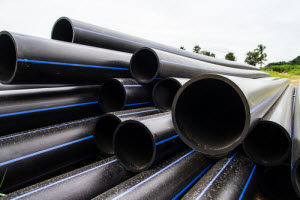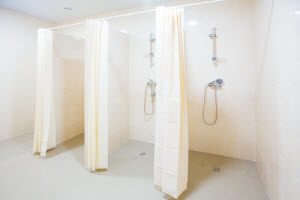Scranton, PA, Oct. 23, 2017 (GLOBE NEWSWIRE) — Scranton Products, a world leader in restroom partitions and lockers, has combined striking aesthetics and enhanced privacy with the introduction of its new line of Aria Partitions®. Specifically developed for restroom privacy and
beauty, each system is available with 17 innovative door designs, 7 panel designs and 27 rich colors and textures, rising above typical, commercial restroom styles.
Aria Partitions offer an enhanced level of comfort and privacy that add elegance, warmth, and charm to virtually any enclosed or private room. This includes making a bold statement that distinctly elevate standard restroom interiors with captivating, beautiful designs and simple sophistication.
“From hospitality to hospitals and institutions, restrooms often create a lasting impression,” said David Casal, Director of Sales Administration, Scranton Products. “With unlimited design options, Aria Partitions are perfect for creating one-of-a-kind restrooms that really standout from common designs for innovative facilities that really want to make a statement and impress patrons. Say goodbye to large sight lines, boring flat doors and large gaps and hello to stylish elegance.”
In addition to removing sightlines to ensure higher privacy, Aria Partitions are designed with a continuous edge-mounted hinge. This provides increased privacy as well as improved aesthetics because there is no face mounted hardware as seen on traditional partition systems. The system also comes with a shoeless pilaster which makes it easier to clean and provides a much more elegant design. Optional engraved designs on doors and side panels add the ultimate design element turning your partition system into the highlight of the room.
To learn more about Scranton Products’ new Aria Partitions please visit www.scrantonproducts.com or call 800-445-5148.
About Scranton Products:
With more than 30 years of experience, Scranton Products provides “Innovative Solutions for a Better Future,” with innovative, creative designs that create a lasting impression. The industry leader in plastic bathroom partitions and lockers, Scranton Products bathroom partitions and lockers are constructed from premium, American-made solid plastic for unmatched durability that stands up to dents, scratches, corrosion, graffiti and mildew. When you purchase Scranton Products, you are investing in peace of mind. With endless design options and an array of designer colors and textures, Scranton Products installs confidence and elegant style in every project.

 HDPE (high-density polyethylene) is a solid, strong plastic that has many applications when it comes to building materials. Some facility managers aren’t sure that HDPE provides a stronger construct than other plastics, but HDPE has been proven to be one of the more durable plastics on the market, making it a formidable opponent to other plastics that are available.
HDPE (high-density polyethylene) is a solid, strong plastic that has many applications when it comes to building materials. Some facility managers aren’t sure that HDPE provides a stronger construct than other plastics, but HDPE has been proven to be one of the more durable plastics on the market, making it a formidable opponent to other plastics that are available. Get started by looking for the question(s) that’s most relevant to you so you can learn the answer!
Get started by looking for the question(s) that’s most relevant to you so you can learn the answer! According to the Department of Justice ADA Title III regulations, there are four major priorities to follow to ensure that you’re following the law and ensuring that your facility is
According to the Department of Justice ADA Title III regulations, there are four major priorities to follow to ensure that you’re following the law and ensuring that your facility is